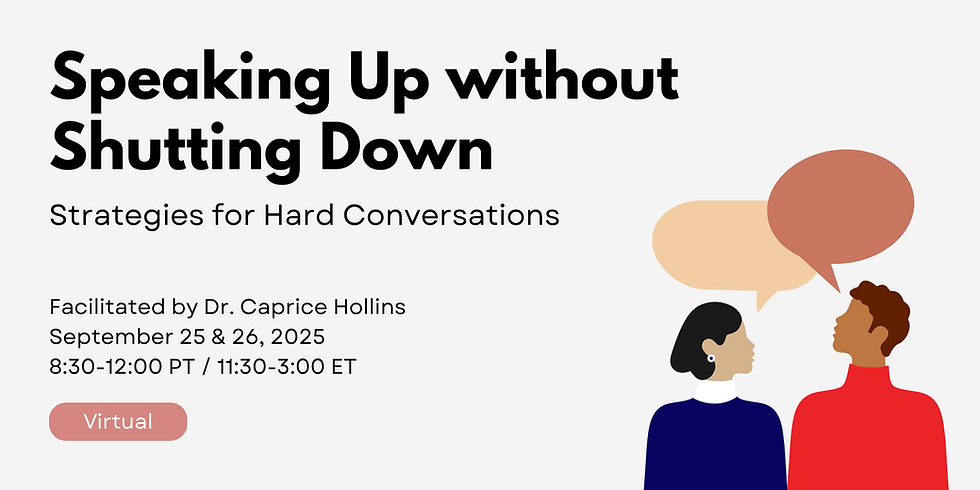Train the Trainer: 9 Strategies for Facilitating Courageous Conversations on Race.
- Cultures Connecting

- Aug 16, 2023
- 2 min read

Instituting systemic change in our organizations requires us to have difficult conversations on race. Here are nine strategies from our upcoming virtual workshop, Train the Trainer, for effectively facilitating courageous conversations.
1. Give Participants time to process.
In order for participants to retain information, you will need to provide them with the opportunity to discuss with others what they just experienced or heard.
2. Bring everyone back together.
Sometimes it can be challenging to bring everyone back together once they've engaged in conversation or are returning from a break. It's important you do not begin until you have everyone's attentions
3. Utilize a variety of teaching strategies.
There are many different learning styles, including visual, musical, intrapersonal and kinesthetic. Changing the way you teach the content throughout the day helps to reach a wider audience of learners.
4. Limit questions that seek "correct" answers.
If you have information you want to share, don't make participants play the "Guess what's in my head" or "Who knows the correct answer" game. Give them the information up front and then ask them open-ended questions so they can make meaning of it based on their experiences.
5. Engage participants who have not spoken.
It's not uncommon for a few participants to dominate the conversation. A successful workshop has the majority of participants engaged through both critical reflection and group discussions. Building rapport, understanding cultural communication differences, and a willingness to take risks will help you navigate this in a way that doesn't leave participants feeling put on the spot or embarrassed.
6. Respond to what isn't being said. Sometimes participants will ask questions or make statements that don't speak to their real conceners or opinions. Asking participants to offer their opinion, asking open-ended questions, or speaking to their concerns can be effective strategies.
7. Take a pulse of the situation.
When things are not going well or you sense that people are not working in community with one another in a way that helps to bridge the racial divide, stop and have participants take a pulse of the situation by reflecting on the process.
8. Walk around during small group discussions.
Participants are more likely to talk openly in small groups than in whole group conversations. Walk around and listen to the conversation so you can gain insight into their thoughts, feelings, attitudes and beliefs.
9. Meet the needs of participants with limited English.
Some participants are multilingual, or for whom English is a second language, have difficulty keeping up with the convesation. Giving both verbal and written information, checking in with them, talking more slowly if you tend to speak fast, and using visual cues are can help with language comprehension.
Specific strategies and examples will be addressed in our Train the Trainer virtual workshop which is offered on August 29-31 from 8:30-12:00pm each day. Both experienced and novice trainers will develop their facilitation skills and gain tools for leading conversations on diversity, equity, inclusion, and belonging.
To learn about new workshops, sign up for our mailing list below!



